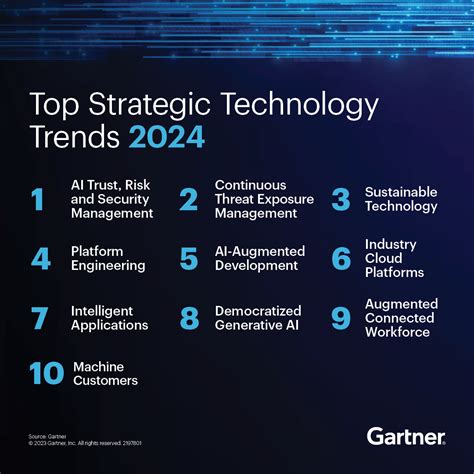The manufacturing industry is experiencing a significant transformation, driven by the integration of advanced technologies and innovative machinery. Ultra tech machinery is revolutionizing the way goods are produced, processed, and delivered. As we navigate the complexities of Industry 4.0, it's essential to stay ahead of the curve and understand the trends that are shaping the future of manufacturing. In this article, we'll explore the top 5 ultra tech machinery trends to watch, highlighting their benefits, applications, and potential impact on the industry.

Trend #1: Artificial Intelligence (AI) in Machinery
AI is transforming the manufacturing landscape by enabling machines to learn, adapt, and make decisions autonomously. Ultra tech machinery equipped with AI can optimize production processes, predict maintenance needs, and detect anomalies in real-time. This trend is expected to continue, with AI-powered machinery becoming increasingly prevalent in industries such as automotive, aerospace, and healthcare.
Benefits:
- Improved efficiency and productivity
- Enhanced quality control and reduced defects
- Predictive maintenance and reduced downtime
Applications:
- AI-powered robots for assembly and inspection
- Machine learning algorithms for process optimization
- Predictive analytics for maintenance scheduling
Trend #2: Internet of Things (IoT) Integration
The IoT is enabling machines to communicate with each other and with humans, creating a network of interconnected devices that can share data and insights. Ultra tech machinery integrated with IoT technology can monitor production processes, track inventory, and optimize supply chain operations. This trend is expected to continue, with IoT-enabled machinery becoming increasingly common in industries such as food processing, pharmaceuticals, and chemicals.
Benefits:
- Real-time monitoring and control
- Improved supply chain visibility and management
- Enhanced product tracking and tracing
Applications:
- IoT sensors for monitoring temperature, humidity, and pressure
- RFID tags for tracking inventory and products
- Cloud-based platforms for data analytics and insights
Trend #3: 3D Printing and Additive Manufacturing
3D printing and additive manufacturing are revolutionizing the way products are designed, prototyped, and produced. Ultra tech machinery such as 3D printers and additive manufacturing machines can create complex geometries, reduce material waste, and increase production speed. This trend is expected to continue, with 3D printing and additive manufacturing becoming increasingly common in industries such as aerospace, automotive, and healthcare.
Benefits:
- Reduced material waste and energy consumption
- Increased production speed and flexibility
- Enhanced product customization and complexity
Applications:
- 3D printing for prototyping and production
- Additive manufacturing for complex geometries and structures
- Hybrid manufacturing for combining traditional and additive manufacturing techniques
Trend #4: Collaborative Robots (Cobots)
Cobots are designed to work alongside humans, enhancing productivity, safety, and efficiency. Ultra tech machinery such as cobots can assist with tasks such as assembly, welding, and inspection, freeing up human workers to focus on higher-value tasks. This trend is expected to continue, with cobots becoming increasingly common in industries such as manufacturing, logistics, and healthcare.
Benefits:
- Improved safety and reduced risk of injury
- Enhanced productivity and efficiency
- Increased flexibility and adaptability
Applications:
- Cobots for assembly and welding tasks
- Human-machine interfaces for collaboration and communication
- Safety sensors and vision systems for monitoring and control
Trend #5: Digital Twinning and Simulation
Digital twinning and simulation are enabling manufacturers to create virtual replicas of their products, processes, and systems. Ultra tech machinery such as digital twins can simulate production processes, predict performance, and optimize design. This trend is expected to continue, with digital twinning and simulation becoming increasingly common in industries such as aerospace, automotive, and energy.
Benefits:
- Improved product design and development
- Enhanced process optimization and simulation
- Reduced risk and increased predictability
Applications:
- Digital twins for simulating production processes
- Simulation software for predicting performance and optimizing design
- Virtual reality for training and operator training





As we conclude our exploration of the top 5 ultra tech machinery trends, it's clear that the manufacturing industry is on the cusp of a revolution. By embracing these trends, manufacturers can improve efficiency, reduce costs, and increase product quality. As the industry continues to evolve, it's essential to stay informed and adapt to the changing landscape.
What are your thoughts on the top 5 ultra tech machinery trends? Share your insights and opinions in the comments section below. Don't forget to share this article with your colleagues and peers who are interested in the latest manufacturing trends.
What is Industry 4.0?
+Industry 4.0 refers to the fourth industrial revolution, which is characterized by the integration of advanced technologies such as AI, IoT, and robotics into manufacturing processes.
What are the benefits of ultra tech machinery?
+Ultra tech machinery offers several benefits, including improved efficiency, reduced costs, and increased product quality. It also enables manufacturers to adapt to changing market conditions and customer needs.
How can manufacturers implement ultra tech machinery?
+Manufacturers can implement ultra tech machinery by investing in new technologies, training their workforce, and developing strategic partnerships with technology providers.
